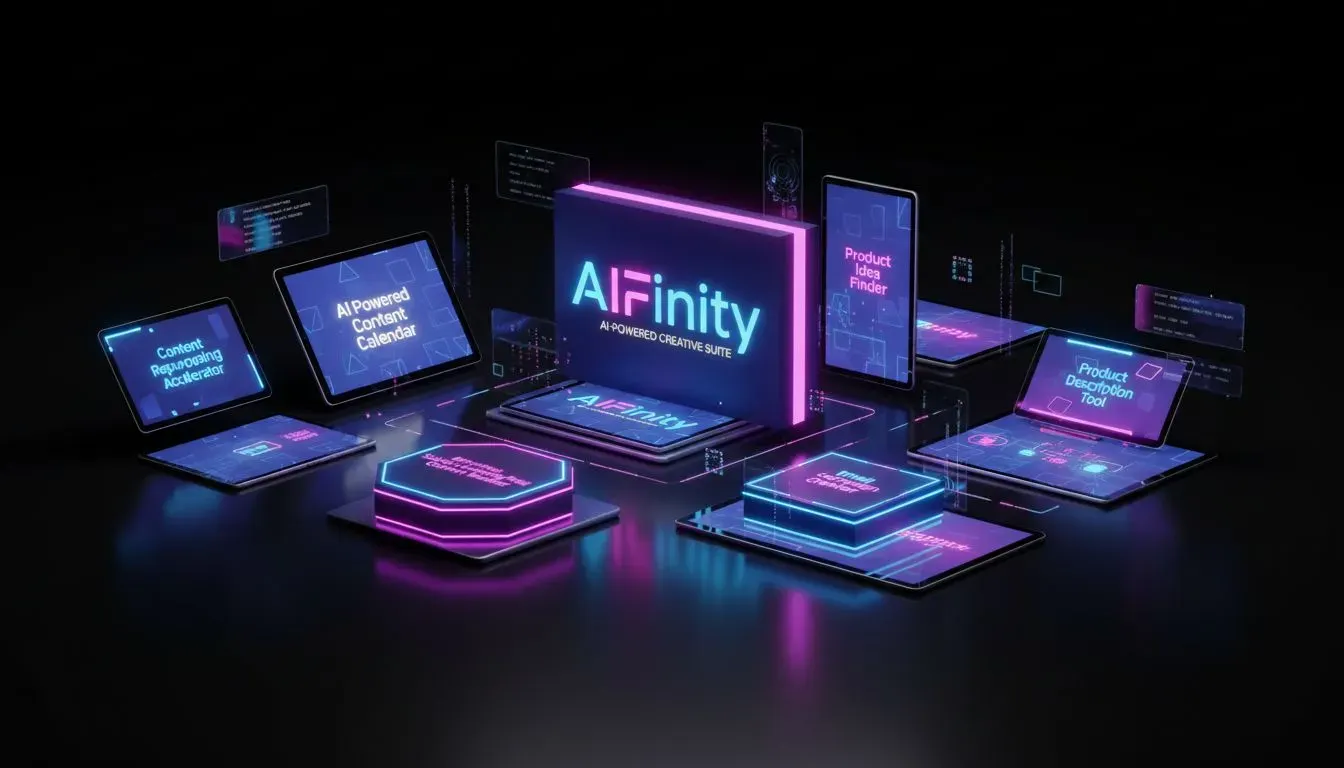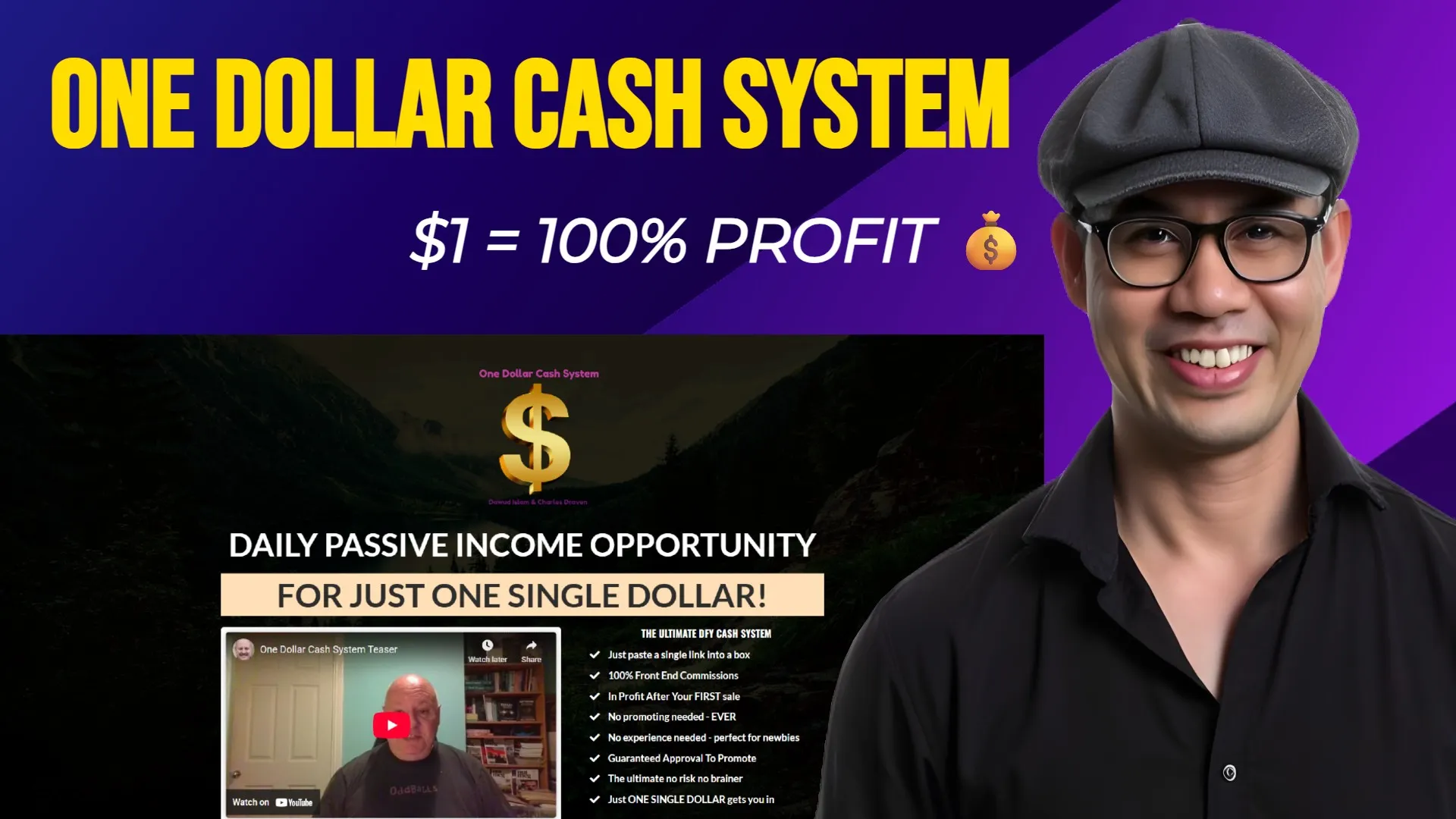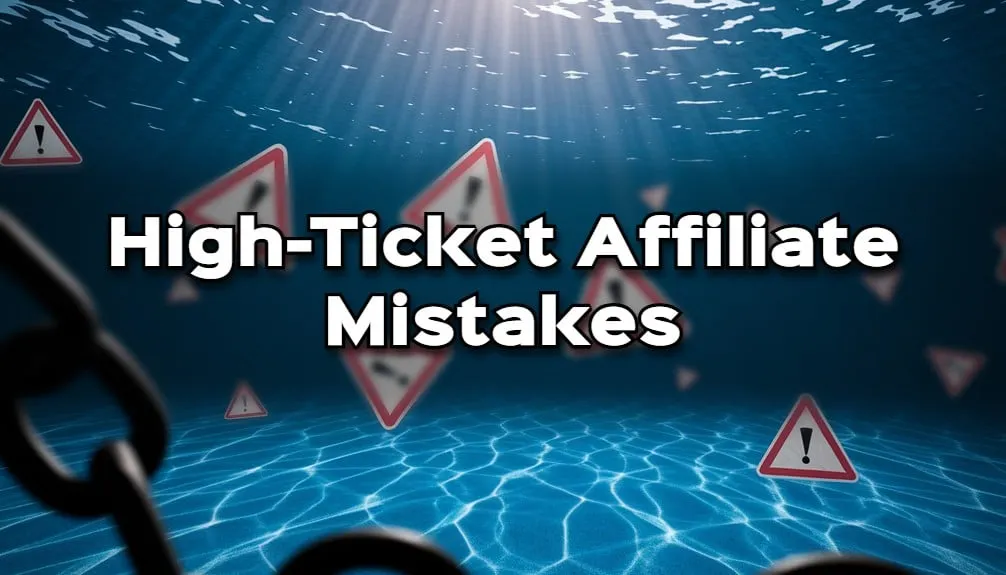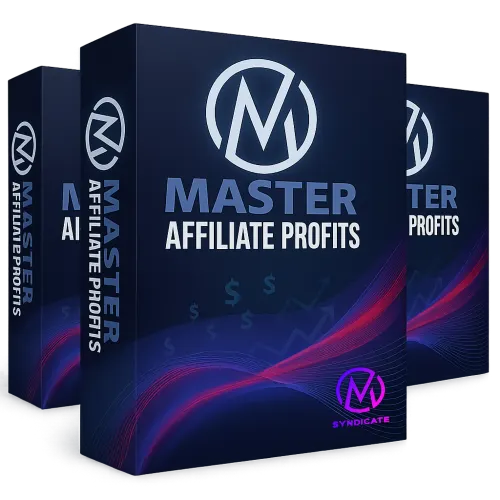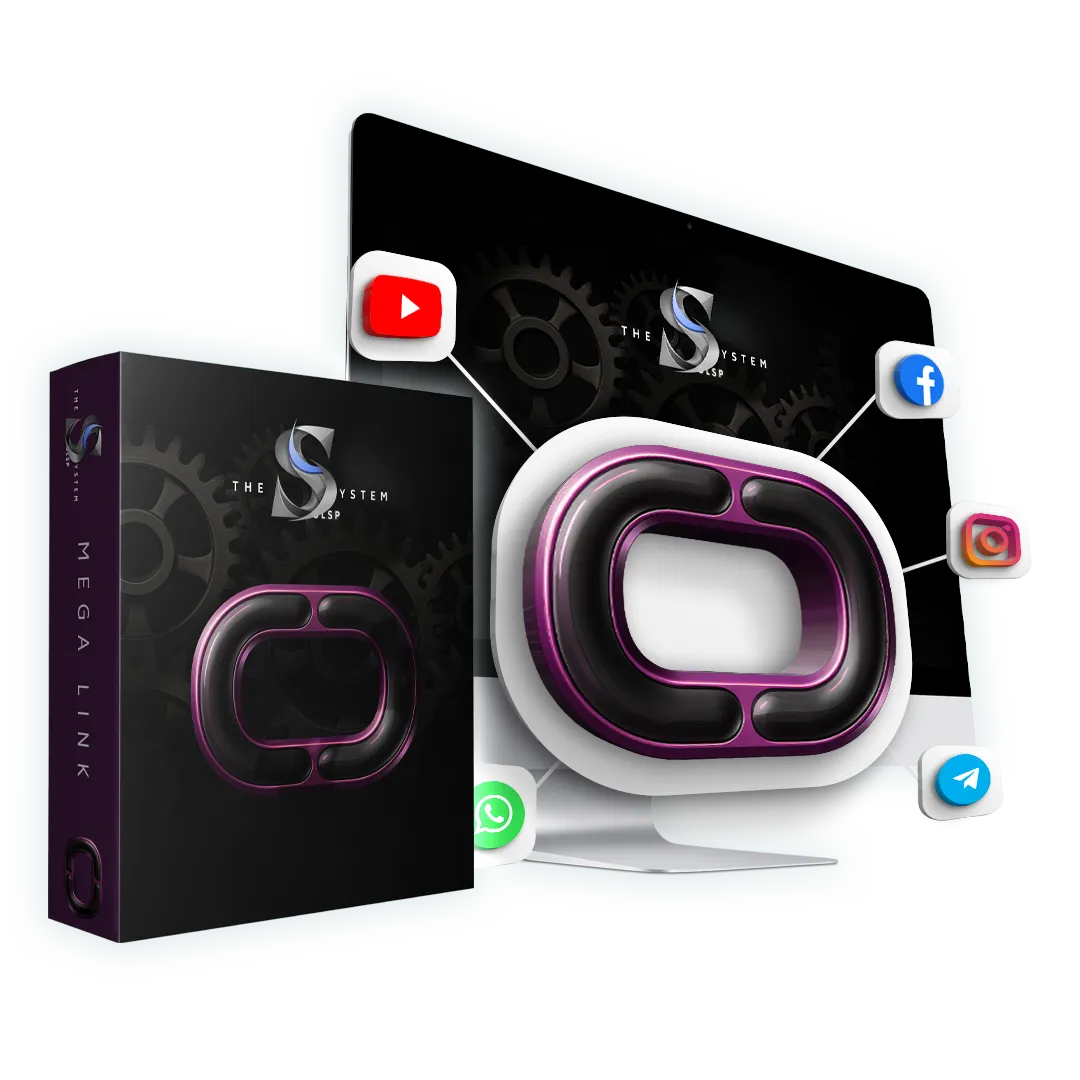Unlocking the Power of Social Media for Affiliate Marketing Profits
 Struggling to captivate your audience with social media affiliate marketing? Want to drive more conversions without spammy promotional posts? Crafting value-first content tailored for each platform is the key to unlocking true social media success.
Struggling to captivate your audience with social media affiliate marketing? Want to drive more conversions without spammy promotional posts? Crafting value-first content tailored for each platform is the key to unlocking true social media success.
Let's dive into this!
Choosing the Right Social Media Platforms for Affiliate Marketing
The first step to effectively using social media for affiliate marketing is determining which platforms make the most sense for your goals, offers, and target audience demographics.
Take time to research where your ideal customers and prospects are most active. For example, are they largely on Facebook and Pinterest if you're marketing to moms? Are platforms like Reddit and Twitter better fits if you're in more tech-focused niches?
It's crucial to align your platform choices with the demographics of the affiliate programs you promote. Find out where existing buyers are engaging with the brand and select platforms that give you access.
Consider the differences between the major networks too. Instagram and Facebook lend themselves well to visual product promotions and lifestyle content. YouTube and TikTok are ideal for video marketing. Twitter is perfect for quick tips and engaging with audiences.
You also need to factor in the types of ad formats and content each platform readily supports. For instance, Instagram thrives on short-form video and image posts, while blog-style articles work better on LinkedIn.
Once you select 2-3 key platforms for your affiliate marketing efforts, set up fully optimized profiles. Complete your bio with relevant affiliate links, use high-quality banner images, and ensure your username and handle align with your brand.
Building a Strong Social Media Presence as an Affiliate Marketer
With your platforms selected, it's time to build a noticeable and meaningful social media presence as an affiliate marketer.
Develop accounts that clearly reflect your personal brand and areas of expertise. For example, @HomeDecorDeals for a home and kitchen goods affiliate.
Take advantage of profile features like link trees, pinned posts, bios, and banners to prominently display affiliate links and merchant relationships. Make it easy for visitors to discover offers.
Remember that social media marketing is a long game. Consistently publish valuable content focused on your niche over time to organically cultivate an engaged audience. Don't take shortcuts with spammy promotions.
Cross-promote your social media profiles across channels. Mention your Instagram account in Twitter bios, share Facebook videos to Instagram Stories, and so on. Develop true omni-channel synergy.
Post high-quality content on a regular schedule to gradually increase your followers, engagement, reach, and influence. Stay patient, but persistent.
Crafting Captivating Content to Enhance Social Media Affiliate Promotions
Creating content that genuinely engages your target audience is essential for affiliate marketing success on social media platforms. Simply plastering links and promotional messaging often backfires. Instead, focus on delivering value first through helpful or entertaining content that subtly integrates your affiliate offers.
Lead with Informative, Educational Content
Build trust and authority with followers by crafting social media posts that educate and inform your niche. For example, share tips for using specific products or highlight inspiring small business success stories relevant to your audience interests.
Offer step-by-step tutorials for relevant skills like starting a podcast or improving photography. Provide lists of your favorite books or productivity tools for business owners. Publishing useful knowledge establishes you as a thought leader.
Entertain and Captivate with Fun Content
Don’t make all your content overtly promotional or educational. Light-hearted, entertaining posts help audiences enjoy engaging with your brand. For instance, share funny parenting memes on Facebook or clever cat videos on Instagram.
Create amusing polls and quizzes followers can participate in. Curate interesting facts and “did you know” style trivia your audience will like. This content showcases your personality beyond affiliate links.
Subtly Integrate Affiliate Offers
Look for seamless ways to incorporate affiliate links, promo codes, or product recommendations into content that offers standalone value, like the examples above.
Mention relevant affiliate products in educational posts as concrete examples. Include affiliate links to helpful items within tip listicles. Spotlight an awesome product you love as part of an entertaining video.
Affiliate marketing succeeds when you meet audience needs first with content they genuinely want to consume. Insert promotions contextually within that valuable content.
Optimize Content Style for Each Platform
Tailor content formats, styles, and lengths to align with each social media platform’s strengths to increase engagement.
For Instagram, use bright visuals, compelling captions, and vertical video for Stories and Reels. On Facebook, share helpful articles, polls, or live Q&As. For YouTube, publish educational video tutorials or vlogs showcasing affiliate products.
Understand the nuances of each platform and take advantage by optimizing content accordingly while retaining the core value. This maximizes visibility and prevents content from feeling spammy.
Repurpose Content Across Platforms
Save time and effort by repurposing existing content across multiple platforms. Turn written blog posts into threaded Twitter conversations or a long-form YouTube video. Extract key sections from a video to create Instagram Reels.
While you tailor the presentation style for each network, the underlying engaging information remains intact. Identify ways to give quality content new life in different formats.
Capitalize on Trends and Pop Culture
Tie trending news or pop culture moments into captivating content aligned with your niche. For example, create Valentine’s Day gift guides or capitalize on a popular meme by relating it to your industry.
When audiences are already highly interested in a topic, integrate affiliate links seamlessly into posts about that trend to capture attention. Insert contextually relevant products and services into content centered around what’s popular now.
Leveraging trends helps you diversify content themes beyond purely promotional posts. Audiences respond well to timely, culturally relevant content tied to what they’re already discussing online.
By leading with value and engagement, then layering in affiliate promotions, you’ll hold audience attention while also driving conversions.
Utilizing Influencer Marketing to Boost Affiliate Promotions
Partnering with relevant social media influencers provides tremendous opportunities to expand the reach of your affiliate marketing content.
Research influencers in your niche with engaged audiences that align with your target demographics. Reach out to inquire about sponsored post partnerships.
Offer complimentary access to products you're an affiliate for in exchange for reviews and dedicated posts from the influencer highlighting the affiliate link.
Encourage influencers to naturally mention and recommend your affiliate offers within non-sponsored content as well. Provide affiliate links for easy insertion.
Consider giving influencers a small revenue share on any sales driven through their links to incentivize promotions.
Use UTMs, unique codes, or other tracking parameters in links provided to influencers so you can monitor performance.
Running Paid Social Media Campaigns as an Affiliate Marketer
Paid advertising opens new avenues to drive traffic to your affiliate offers and content:
Test Facebook and Instagram ads pointing directly to affiliate offer landing pages. Use precise interest targeting to reach buyer personas.
Analyze cost per click, conversion rates, and overall profitability to assess effectiveness. Refine targeting and creative to improve performance.
Consider promoted tweets on Twitter to share affiliate links and content with relevant hashtags and handles. Leverage Twitter's self-serve ad platform.
YouTube ads can embed affiliate links directly within or below videos. Target viewers based on their interests and past behaviors.
No matter the platform, always split test two or more variations of your ad creative, messaging, and targeting. Scale up the highest performing affiliate campaign versions.
Analyzing and Optimizing Performance of Social Media Efforts
To maximize the ROI of your social media affiliate marketing, you need to continually track performance and optimize your campaigns:
Use UTMs, unique links, and promo codes to identify which affiliate sales and leads come from each social platform and campaign.
Monitor engagement metrics like follower growth, shares, comments, click-through rate on links, and impressions to spot trends.
Experiment with different post formats, CTAs, timing, etc. and use A/B testing to determine what content resonates best with your audience.
Refine your targeting over time by analyzing what interests, behaviors, and demographics drive the most conversions from your ads and organic content.
Cut underperforming content or campaigns that don't yield sufficient ROI after testing and shift budget to better opportunities.
Engaging With Your Audience to Build Loyal Relationships
Social media presents incredible opportunities for brands and businesses to directly engage with their target audience. By fostering real connections and relationships with followers, you can establish loyalty and trust that drives growth. Here's how to interact with your audience to maximize engagement:
Respond Promptly to All Comments and Questions
Stay on top of monitoring your social media notifications so you can respond quickly to any comments or questions on your posts and profiles. Provide followers with helpful information, resources, or support when needed.
When a prospect asks about a product feature or wants details on an offer, give them a thoughtful reply with useful details. If someone voices a complaint, apologize sincerely and offer to make it right. Handling interactions professionally demonstrates you're a valuable resource committed to your audience.
Make it easy for people to get their needs addressed by being responsive. This helps convert prospects into loyal brand advocates who feel like more than just a sales target.
Share User-Generated Content
User-generated content like customer reviews, product photos, brand mentions, and success stories help personalize your business and make it more relatable.
When followers organically mention your company or post their own related content, engage with the posts and share them from your account when appropriate. Of course, always ask permission first.
For example, reshare an Instagram carousel from a delighted customer showcasing an outfit they bought using your affiliate promo code. Or, repost a Twitter user's video reviewing a makeup brush set you recommend.
This third-party advocacy builds trust and gets other audience members excited to try your offers. It shows tangible outcomes real people have achieved.
Offer Exclusive Promotions and Incentives
Followers will engage more eagerly when you provide special offers just for being part of your social media community.
For instance, give Instagram supporters early access to an upcoming product launch or coupon code. Or let email subscribers from Twitter know about a limited-time webinar for loyalty members only.
When fans feel like VIPs who get perks others don't, they pay closer attention to your account for more exclusive deals. Offering reserved incentives motivates engagement.
Build an Email List for Ongoing Connections
While social media allows more direct interactions, email marketing enables deeper, longer-lasting relationships with highly interested followers.
Use lead generation tools like landing pages and giveaways to collect emails from social media users who want to subscribe. Then, send them a regular cadence of valuable educational content and special promotions.
For example, someone who follows you on Pinterest for recipe ideas could join your email list to get weekly cooking tips. Nurture them via email with relevant affiliate offers and partner discounts over time.
Foster a Supportive Community
Think of your social media accounts as thriving communities where followers look forward to not only your posts, but also interacting with each other.
When commenting on your content, encourage audience members to connect with others who have shared feedback. Make introductions when appropriate to help build camaraderie.
Appoint long-time supporters as moderators to help newcomers. Facilitate discussions by posing questions for open-ended conversations. Showcase and recognize valued members.
Building a supportive, inviting community enhances how visitors experience your brand on social platforms. By cultivating an engaged, loyal audience that feels connected to you and each other, you gain powerful advocates who will help drive your affiliate marketing success through referrals and word-of-mouth influence.

